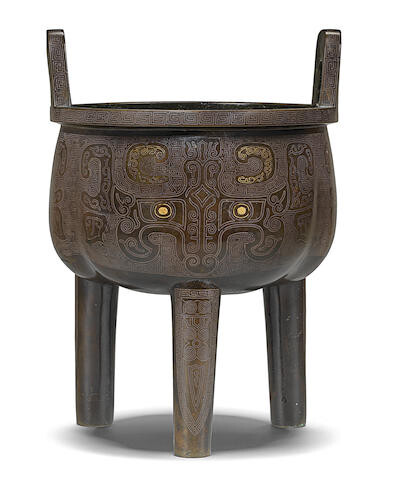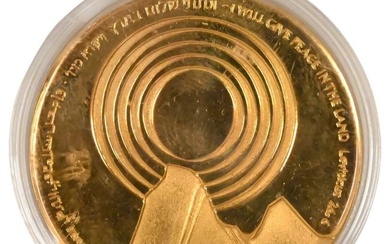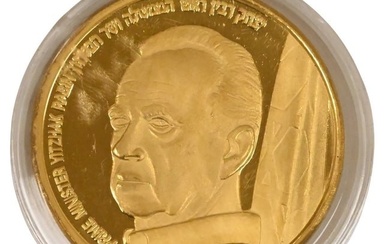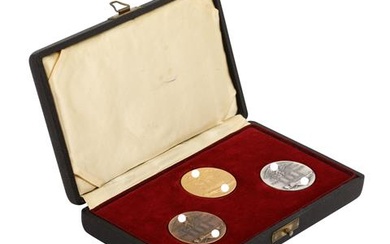A VERY FINE GOLD AND SILVER-INLAID BRONZE TRIPOD INCENSE BURNER, LIDING
17th/18th century
17th/18th century
The tri-lobed body decorated with crisp silver and gold wire inlay forming archaistic motifs and taotie masks, supported on three slightly tapered legs decorated with stylised cicadas, the lipped rim and arched handles with key-fret borders, the interior and underside undecorated. 26cm (10 1/4in) high.
十七/十八世紀 銅錯金銀饕餮紋鬲鼎式香爐
Provenance:
Spink & Son Ltd., London
G. N. Parry (1917-1978), London, acquired from the above on 24 September 1959, and thence by descent
來源:
倫敦古董商Spink & Son Ltd.
倫敦G. N. Parry(1917-1978)舊藏,於1959年9月24日購自上者,並由後人保存迄今
The present liding is impressive for the exceptionally well executed archaistic design, utilising the entire three-lobed exterior of the vessel.
The decorative technique of silver-wire inlay on bronze first appeared during the late Zhou dynasty, and was revived and became popular from the Song dynasty onwards when archaism became a predominant style in the production of artefacts. The dating of such gold and silver-inlaid bronze archaistic vessels has been a subject of debate over the past years, with opinions and dating ranging from the Song to the Qing dynasty. See a closely related gold and silver-inlaid bronze incense burner, liding, dated as Song dynasty, which was sold at Sotheby's Hong Kong, 8 October 2014, lot 3335. Compare, however, with a related but smaller silver-wire inlaid tripod vessel, ding, 17th/early 18th century, illustrated by M.Maucuer, Bronzes de la Chine Imperiale des Song aux Qing, Paris, 2013, p.101, no.52.
Compare also with a related but smaller silver-wire inlaid bronze tripod censer, ding, 16th century, which was sold at Christie's Hong Kong, 3 June 2015, lot 3315. For a further related example, see a smaller silver-wire inlaid bronze archaistic tripod censer, liding, 18th century, which was sold at Christie's New York, 26 March 2010, lot 1320.
折沿方唇,立耳,袋狀腹分襠,柱足微斂。錯金銀所呈現之饕餮紋樣條俐落悅目。柱足飾蟬紋,盤口及立耳覆回紋,內壁及底部則素面無飾。本例裝飾精湛,造型優雅,利用袋狀腹之起伏造型凸顯獸面輪廓之設計尤為巧妙。
錯金銀工藝最早可見於周代晚期,並隨復古風格於宋代興起時再次流行。以錯金銀為飾之仿古器皿的年代在過去數年中一直頗受爭論,一般認為該類器年代最早可至宋,最晚則至清代。香港蘇富比曾於2014年10月8日售出一例宋代銅錯金銀饕餮紋沖天耳鼎式爐,拍品編號3335,其工藝及紋飾均與本品類似。亦可參見一座尺寸稍遜的十七/十八世紀早期錯銀鼎式香爐,見M.Maucuer著,《Bronzes de la Chine Imperiale des Song aux Qing》,巴黎,2013年,頁101,編號52。
另有一件明十六世紀銅錯銀饕餮紋鼎及一清十八世紀銅錯銀鬲鼎式香爐,分別售出於香港佳士得,2015年6月3日,拍品編號3315,及紐約佳士得,2010年3月26日,拍品編號1320,亦可資比對。
View it on
Sale price
Estimate
Time, Location
Auction House
17th/18th century
17th/18th century
The tri-lobed body decorated with crisp silver and gold wire inlay forming archaistic motifs and taotie masks, supported on three slightly tapered legs decorated with stylised cicadas, the lipped rim and arched handles with key-fret borders, the interior and underside undecorated. 26cm (10 1/4in) high.
十七/十八世紀 銅錯金銀饕餮紋鬲鼎式香爐
Provenance:
Spink & Son Ltd., London
G. N. Parry (1917-1978), London, acquired from the above on 24 September 1959, and thence by descent
來源:
倫敦古董商Spink & Son Ltd.
倫敦G. N. Parry(1917-1978)舊藏,於1959年9月24日購自上者,並由後人保存迄今
The present liding is impressive for the exceptionally well executed archaistic design, utilising the entire three-lobed exterior of the vessel.
The decorative technique of silver-wire inlay on bronze first appeared during the late Zhou dynasty, and was revived and became popular from the Song dynasty onwards when archaism became a predominant style in the production of artefacts. The dating of such gold and silver-inlaid bronze archaistic vessels has been a subject of debate over the past years, with opinions and dating ranging from the Song to the Qing dynasty. See a closely related gold and silver-inlaid bronze incense burner, liding, dated as Song dynasty, which was sold at Sotheby's Hong Kong, 8 October 2014, lot 3335. Compare, however, with a related but smaller silver-wire inlaid tripod vessel, ding, 17th/early 18th century, illustrated by M.Maucuer, Bronzes de la Chine Imperiale des Song aux Qing, Paris, 2013, p.101, no.52.
Compare also with a related but smaller silver-wire inlaid bronze tripod censer, ding, 16th century, which was sold at Christie's Hong Kong, 3 June 2015, lot 3315. For a further related example, see a smaller silver-wire inlaid bronze archaistic tripod censer, liding, 18th century, which was sold at Christie's New York, 26 March 2010, lot 1320.
折沿方唇,立耳,袋狀腹分襠,柱足微斂。錯金銀所呈現之饕餮紋樣條俐落悅目。柱足飾蟬紋,盤口及立耳覆回紋,內壁及底部則素面無飾。本例裝飾精湛,造型優雅,利用袋狀腹之起伏造型凸顯獸面輪廓之設計尤為巧妙。
錯金銀工藝最早可見於周代晚期,並隨復古風格於宋代興起時再次流行。以錯金銀為飾之仿古器皿的年代在過去數年中一直頗受爭論,一般認為該類器年代最早可至宋,最晚則至清代。香港蘇富比曾於2014年10月8日售出一例宋代銅錯金銀饕餮紋沖天耳鼎式爐,拍品編號3335,其工藝及紋飾均與本品類似。亦可參見一座尺寸稍遜的十七/十八世紀早期錯銀鼎式香爐,見M.Maucuer著,《Bronzes de la Chine Imperiale des Song aux Qing》,巴黎,2013年,頁101,編號52。
另有一件明十六世紀銅錯銀饕餮紋鼎及一清十八世紀銅錯銀鬲鼎式香爐,分別售出於香港佳士得,2015年6月3日,拍品編號3315,及紐約佳士得,2010年3月26日,拍品編號1320,亦可資比對。







